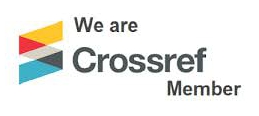A Robust Audio Watermarking Integrating Audio Characteristics and Intrinsic Mode Functions
Keywords:
audio watermarking, speech, intrinsic mode function, synchronization codeAbstract
Digital watermarking technology is a process that has several applications. It is used in copyright protection, copy protection, content authentication, fingerprinting, broadcast monitoring, indication of content manipulation and information carrier. In audio watermarking, data is embedded into the audio signal. In which, embedded data can be extracted or detected from the audio signal. Digital watermarking takes place by embedding the copyright information into a cover object. In other words, digital watermarking is the embedding of an auxiliary piece of information. It takes place by embedding a perceptually transparent digital signature about a signal into the host audio signal itself. Digital signature carries a message. Investigation is held on audio watermarking that uses audio characteristics and Intrinsic Mode Functions (IMFs) for more robustness. After dividing the audio signal into segments, audio features are extracted directly from the acoustical signal that retains only the important distinctive characteristics of the intended audio classes. IMFs are calculated for each frame, which are intrinsic oscillatory components. In the last IMF, watermark is embedded. The watermark is a combination of Synchronization Code (SC) and binary image’s bit. Signal to Noise Ratio (SNR) and Bit Error Rate (BER) are calculated to test the performance of the technique used. The used technique proved to be better in performance than other recent audio watermarking researches, so that the hidden watermark is robust to different image sizes and frame sizes.







